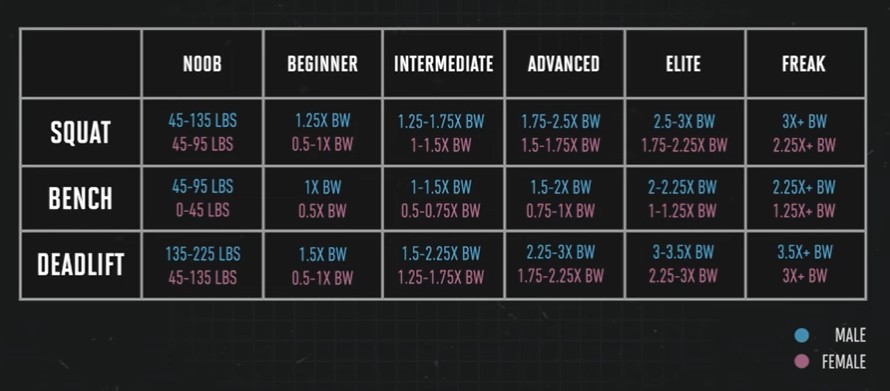Are you as strong as you think you are? It’s a question many of us ponder, comparing ourselves to others in the gym or wondering if our strength aligns with our training efforts. This article provides realistic strength standards based on training experience, from novice to elite, helping you gauge your strength level and set achievable goals.
Strength is influenced by various factors, including genetics, training program, and technique. Genetic differences in skeletal structure (leverages) can impact performance on different lifts. For example, short arms might favor bench pressing but hinder deadlifts. However, strategic programming and technique modifications can overcome leverage disadvantages.
While genetics play a role, consistent training with a well-structured program is crucial. Progress varies, with some individuals reaching advanced levels quickly while others take longer. These standards, based on coaching experience, powerlifting data, and established strength scales, represent average abilities.
Important Considerations:
-
Consistent Technique: These standards assume proper form. Don’t sacrifice technique (like squat depth) to achieve higher numbers. Bench press reps should include a pause on the chest.
-
Bodyweight Ratios: These standards are based on bodyweight ratios and may not accurately reflect strength for individuals over 250 pounds (113 kg). For heavier lifters, using 250 pounds as a baseline provides a reasonable estimate.
-
One-Rep Max (1RM): Standards are based on your 1RM. While regular 1RM testing isn’t necessary, understanding your 1RM helps track progress. Use an online 1RM calculator to estimate based on near-failure sets.
Strength Standards by Experience Level:
Noob (3-6 Months): Men should aim for squats and deadlifts between the empty bar and 135 pounds, and bench presses between 45-95 pounds. Women typically start with lower weights but progress quickly with consistent training.
Beginner (0.5-2 Years): Expect linear progress, adding weight or reps each workout. Men should target a squat of 1.25x bodyweight, bench press of 1x bodyweight, and deadlift of 1.5x bodyweight.
Intermediate (2+ Years): Progress slows, requiring a less linear training approach. Consider incorporating daily undulating periodization (DUP) with varying rep ranges.
Advanced (5+ Years): Reaching this level demands methodical programming and addressing weak points. Specialization phases focusing on one lift at a time might be necessary.
Elite (5-10+ Years): This level requires optimal training, genetics, and dedication. Not everyone reaches this stage.
Freak (5-10+ Years): This category represents exceptional genetic potential and years of dedicated training. Lifters here exhibit extraordinary strength levels.
Use these standards as a guide, focusing on gradual improvement. Consistent effort and a well-structured program are key to achieving your strength potential. Remember to prioritize proper form and listen to your body.
(References: ExRx 1RM Calculator, Stronger by Science, The Strength Athlete, Legion Athletics, T-Nation, Starting Strength)

